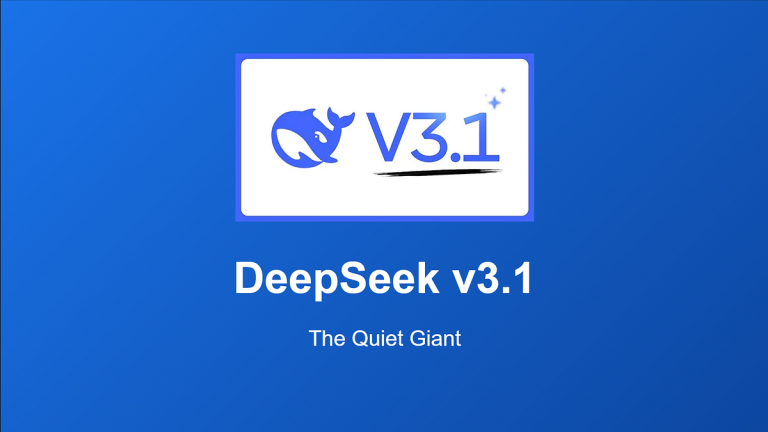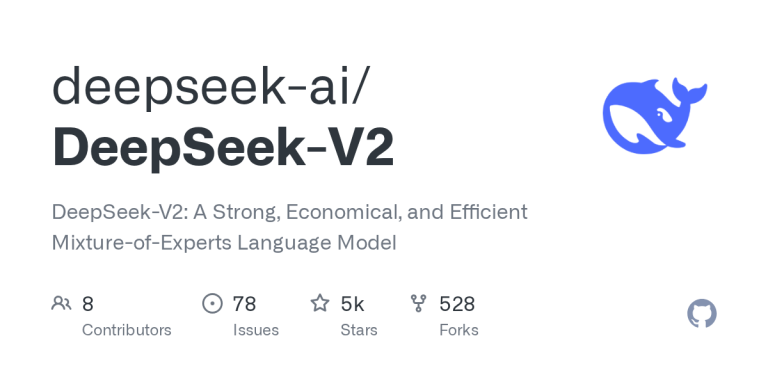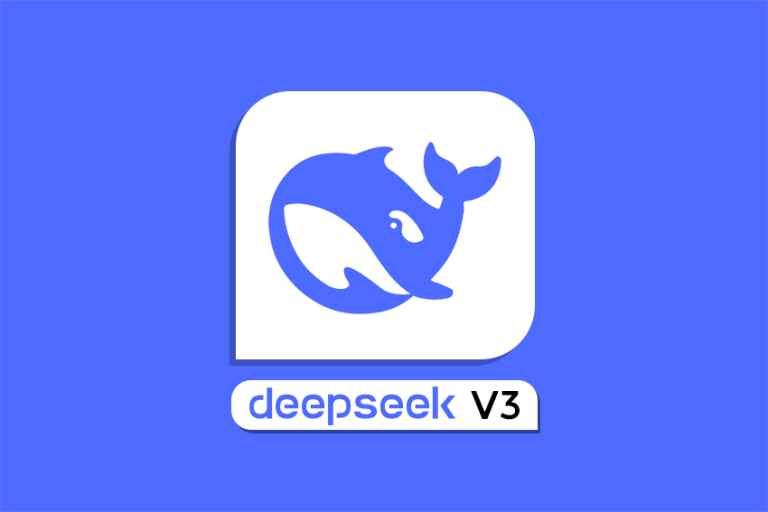Deep-seek.chat is an independent website and is not affiliated with, sponsored by, or endorsed by Hangzhou DeepSeek Artificial Intelligence Co., Ltd.

DeepSeek-R1
Deepseek-r1 is an open-source language model that combines code and text data for intelligent code-related text tasks. Constructed with 14 billion components, it’s best for chat, writing, and code assist.
Its unique blend of English and code makes it suitable for most technical occupations in the U.S.
Developers appreciate how deepseek-r1 chat enables faster proofs of concepts, faster development tool support, and easier code compliance checks.
Finally, we illustrate how deepseek-r1 forms actual technology employment.
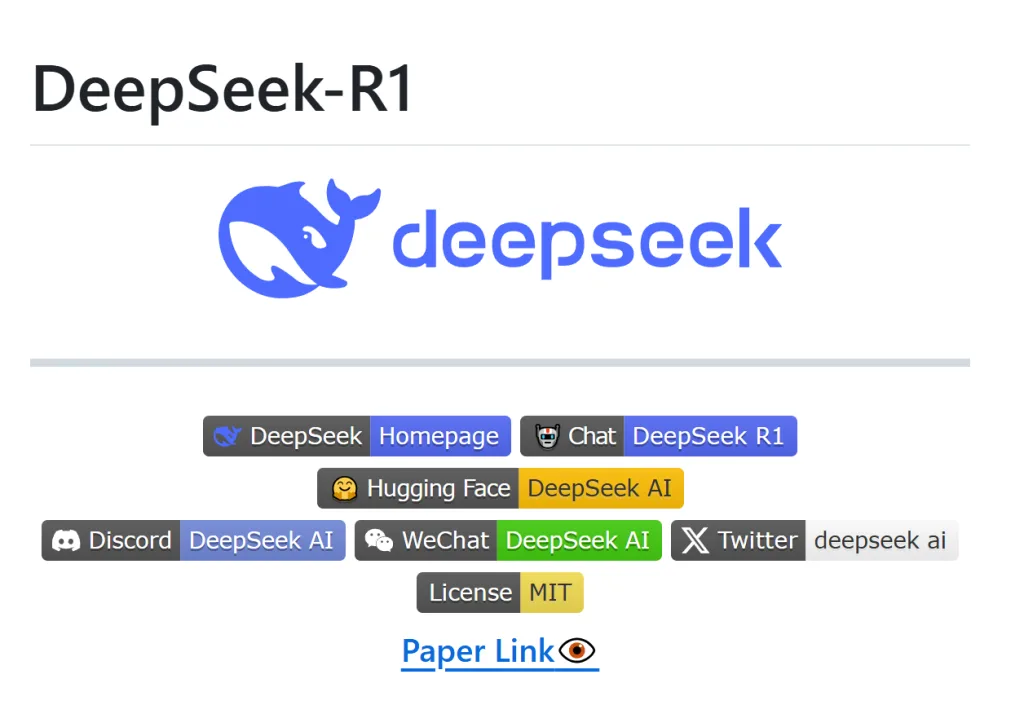
Key Takeaways
- Deepseek-R1 combines state-of-the-art AI techniques with specialized, optimized hardware. This combination provides much higher performance, including improved search relevance in real-world applications across America.
- The system’s design is intentionally flexible and adaptable. This has positioned it to serve industries across the United States, like finance, healthcare, and technology.
- Integrated quality control features ensure high quality, duplicable, and precise outcomes. Rigorous performance benchmarks and quality controls ensure that the highest standards are followed in AI-generated content.
- R1 allows American businesses to integrate the platform with their current systems easily. It accomplishes this by being powered by open-source tools and APIs, so integration is seamless and simple.
- Cost efficiency and a transparent pricing structure make R1 a competitive option for organizations seeking to maximize value while minimizing operational costs.
- Continue to learn by reading technical documentation and participating in user forums. Follow R1 Development Updates to continue to unlock R1’s full potential and stay on the cutting edge of AI technology entering the U.S. market.
Decoding R1’s Core Technology
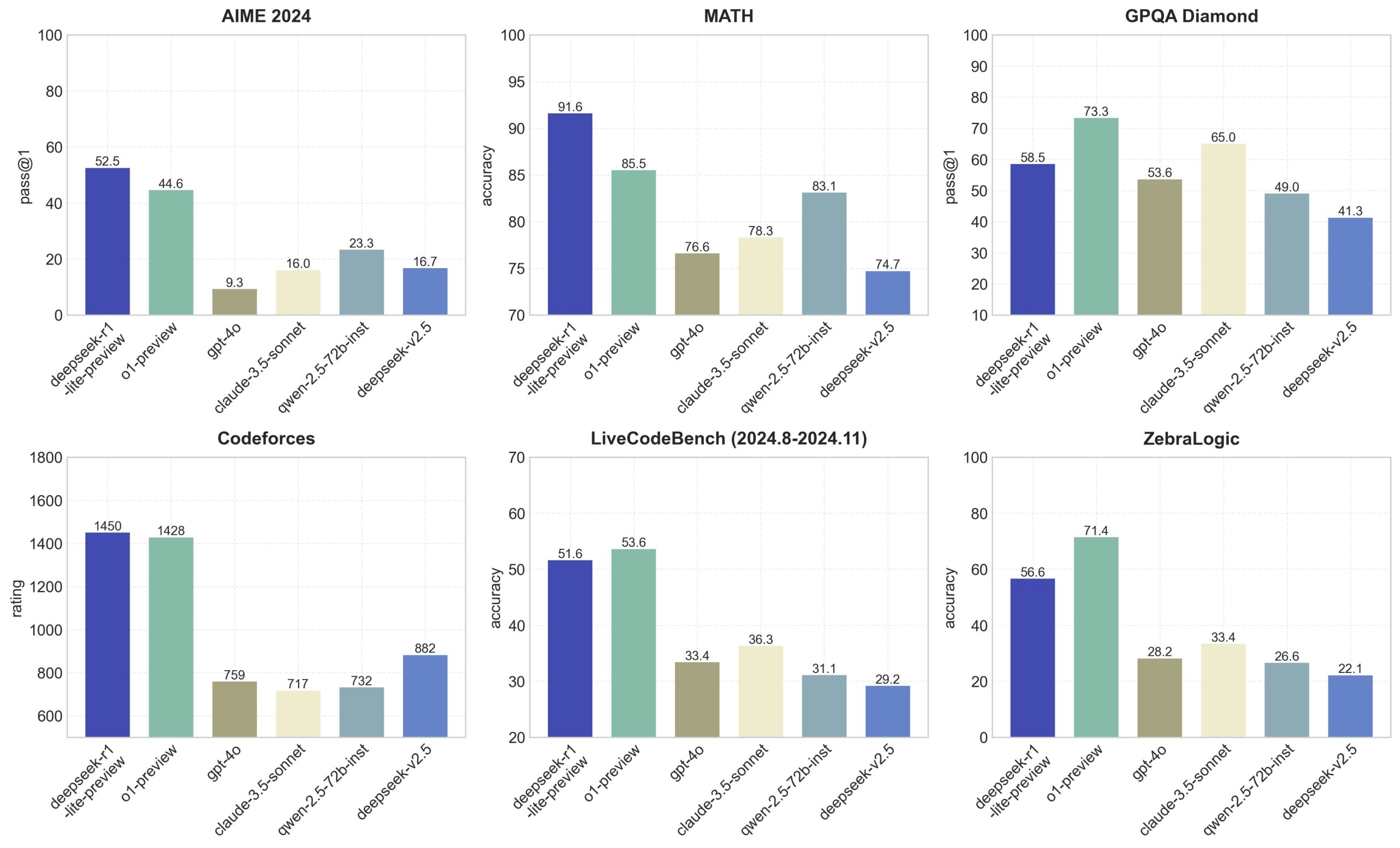
R1 represents an exciting new chapter we hope will unfold in the AI landscape. Its technology combines the state-of-the-art in neural networks with an engineering approach to reasoning. This model powers improved accuracy and increased transparency, particularly in more objective tasks such as mathematics and logic.
This section will look at how R1’s structure, learning methods, innovations, and quality controls work together to set it apart from other models on the market.
1. Unpacking the Foundational Architecture
R1’s backbone is a Mixture of Experts (MoE) architecture. This design lets the model access specialized “experts.” These smaller networks, which make up the larger system, are each individually trained to solve very different kinds of problems.
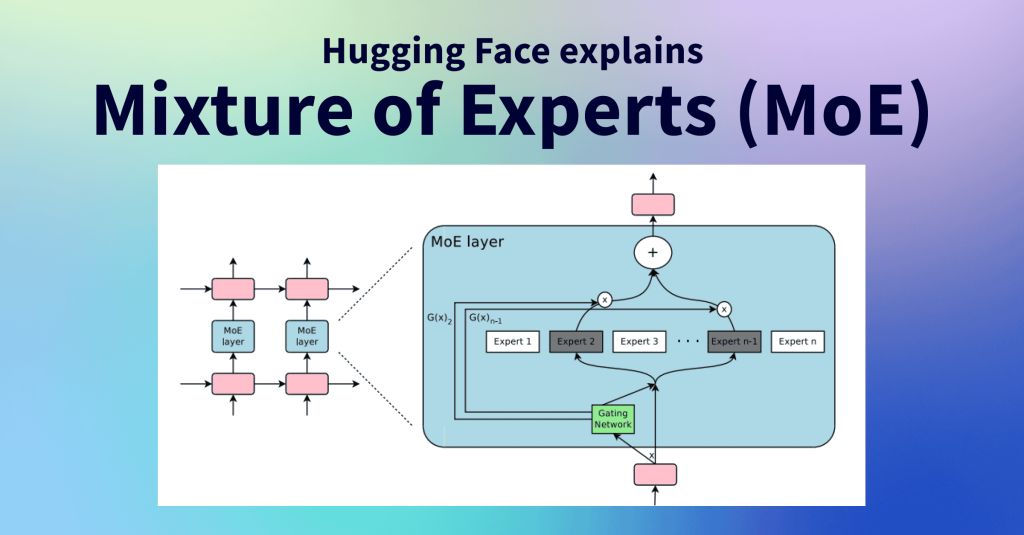
For example, one specialist may be tasked with predicting math, while another specializes in predicting language reasoning. Under this arrangement, R1 pairs the most appropriate specialist to every input. That precision extends the quality and depth of its reasoning, making its outputs more contextually relevant.
This unique, modular architecture allows for a distinct flexibility. It powers diverse AI tasks, ranging from equation solving to natural language parsing. MoE allows for more efficient scaling and overall resource use compared to monolithic models.
This is particularly advantageous when training on hardware with stringent power requirements. R1’s performance improvements stem from this specialist routing. The system isn’t taking every single input and calculating the same parameters.
Rather, it intelligently routes questions to the most capable expert, which accelerates time to answer and reduces expensive, unnecessary calculations. Like, if a user asked an advanced math question, the system would not waste time involving language specialists.
| Model | Architecture | Expert Routing | Resource Use | Scalability | Specialization |
|---|---|---|---|---|---|
| R1 | MoE | Yes | Efficient | High | Strong |
| GPT-4 | Dense Transformer | No | Heavy | Moderate | Generalist |
| PaLM-2 | Expert Layers | Limited | Moderate | Good | Mixed |
2. Advanced AI Techniques Inside R1
The complementary power of RL and SFT Return R1’s strength in reasoning to the use of both RL and SFT. The model is originally built on RL, learning through trial and error, allowing it to establish fundamental tactics for devising solutions.
Then, SFT takes over, finetuning those strategies on a dataset of human-annotated examples. Perhaps the most interesting aspect is R1’s use of “thinking tokens.” As the model is posed a question, it creates tokens that detail its reasoning.
For example, in a math word problem, R1 will create a chain of reasoning to explain its thought process leading up to a solution. This approach increases both the transparency of R1’s reasoning and, more importantly, the quality of its reasoning itself.
Consider generative AI applications such as code synthesis or logical analysis. Unlike many generative AI tools, R1’s chain-of-thought output is not a black box. It opens up the rationale for the model’s responses, increasing transparency and dependability in applications where accuracy is vital.
3. Key Innovations Driving Performance
What makes R1 exceptional are several key innovations driving performance. First, its modular design makes it run faster, as it is only able to put the appropriate experts to work on the right tasks.
Second, despite being trained on chips that are now considered old, the MoE method is an efficient use of resources. This careful use of hardware is unusual for today’s large models. R1’s key innovations address frequent AI pitfalls like overfitting or an inability to scale quickly.
Second, they enable the system to quickly scale and adapt to new types of problems and data.
- Modular MoE architecture for targeted processing
- “Thinking tokens” for clear reasoning steps
- RL+SFT combo for robust learning
- Efficient training on outdated chips
- Chain-of-thought generation for transparency
4. How R1 Enhances Search Relevance
R1’s architecture directly boosts search relevance. Specialized routing makes sure that queries are sent to the most-appropriate mini-models. This maximizes the likelihood of getting a correct answer.
The new chain-of-thought tokens allow users to understand why a result was shown, reducing the mystery surrounding a response. User input is essential to the process.
R1 customizes its approach depending on the complexity of the query. For ambiguous queries, it relies on world knowledge. For difficult, multi-hop queries, it defers to higher-level reasoning specialists.
Algorithms for ranking and clustering results help sort through noise, making sure that the most relevant answers show up first. This is the most impactful when a search is technical or scientific in nature. The system cross-checks outputs for logic.
Checklist for Search Relevance in R1:
- Expert routing based on input type
- Chain-of-thought explanations
- Query complexity detection
- Multi-step reasoning for advanced queries
5. Addressing Specific User Needs
R1 uses a dynamic processing path that’s tailored to the user’s needs. Whether it’s a finance analyst needing accurate forecasts or a student solving math homework, R1 picks the right expert and approach.
This flexibility is what allows R1 to be applicable across nearly all industries. In healthcare, as one example, R1 is able to take in patient histories and recommend next steps.
In finance, it combs through huge datasets and flags financial outliers. R1 meets these user needs:
- Handling well-defined, logic-heavy questions
- Tailoring outputs for industry-specific use cases
- Adapting to both novice and expert users
- Providing clear reasoning paths for auditability
6. Built-in Quality Control Mechanisms
Quality control is baked into R1’s workflow. Each output is checked for logical coherence and fact-checking. Inputs of chain-of-thought tokens serve as reasoning and verification steps.
If a calculation is illogical or out of bounds, the result is flagged within the system for further review. Keeping content standards high is always important, but even more so with AI-generated text.
R1’s process makes it less likely an error such as a claim not supported by evidence or mathematical error is submitted.
Quality control practices:
- Multi-step verification of outputs
- Consistency checks using thinking tokens
- Feedback loops for model improvement
7. Avoiding Scaled Content Issues
Scaling AI output at a level of quality is challenging. R1 addresses this by employing expert routing and internal checks, even at high query volumes. Since every expert only handles the one thing it knows best, that content remains extremely focused.
Low quality content at scale can lead to user confusion or loss of trust. R1’s commitment to chain-of-thought and expert specialization goes a long way toward maintaining quality, even at high levels of user activity.
Best practices for avoiding scaled content issues:
- Use expert routing to avoid overloading any one expert
- Keep chain-of-thought steps clear
- Run logic checks before releasing answers
Measuring R1’s Real-World Impact
Now, Deepseek-R1 has taken the world by storm, even making headlines across the tech world. It’s changing the nature of how we develop and apply artificial intelligence.
The impact of R1 Today, R1 can be found in everyday coding practices, financial data analysis, and even automating healthcare processes. R1 is best at figuring out the hardest math problems you might find on MATH-500 and AIME.
Furthermore, it represents a holistic success on software engineering milestones, including SWE-bench Verified. Users are quick to point out all the ways that R1 streamlines their workflows, reduces mistakes, and decreases the time spent on tedious manual tasks.
At least one developer has claimed that R1 is 96% cheaper than alternatives. This affordability empowers small teams to experiment with cutting-edge AI in ambitious projects that were once out of their reach.
Performance Benchmarks Explained
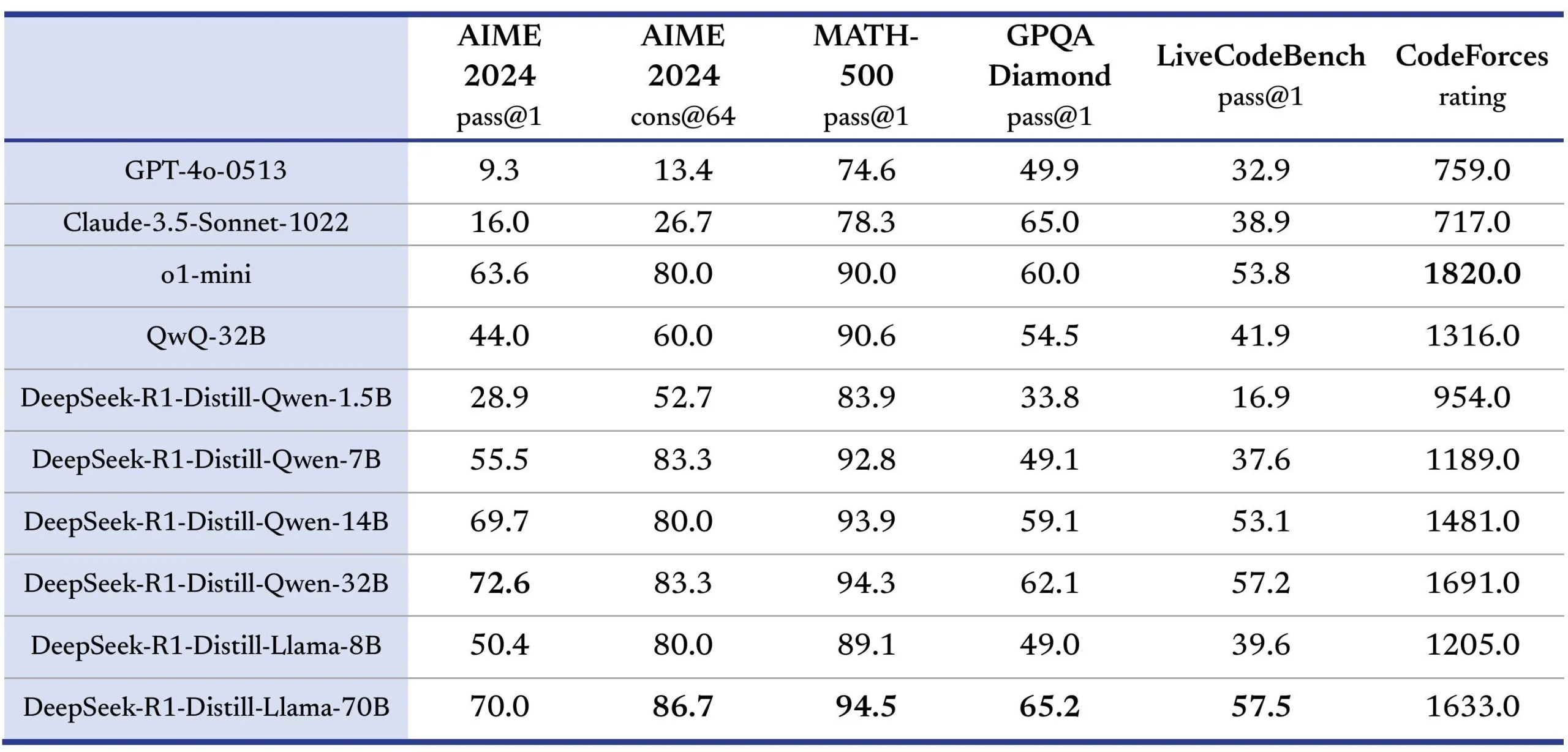
Performance benchmarks are one of the gold standards for testing real-world effectiveness. Important benchmarks for R1 are MATH-500 (math), AIME (advanced problem solving), and SWE-bench Verified (code writing).
These are determined by putting R1 through publicly-available datasets and processes and scoring it on speed and accuracy. The results matter: on many tests, R1 keeps up with models like OpenAI’s o1, even though it was built with a much smaller budget ($5.6 million) and fewer chips.
When selecting R1, consumers should look for accuracy, timeliness, resource efficiency, and privacy considerations. Here’s a simple checklist:
- Accuracy on target tasks
- Speed of response
- Resource use (cost and hardware)
- Privacy and data handling
Key Metrics for Evaluation
Users should look at these metrics:
- Task accuracy (math, code, text)
- Time to result
- Cost per run
- Community support (downloads, updates)
- Privacy safeguards
These determine R1’s overall success in executing real work, and its continued success over the long term. Focusing attention on these allows users to truly maximize what R1 has to offer.
Critical metrics:
- Math/code accuracy
- Response speed
- Cost savings
- Number of active users
- Privacy risk
Comparing R1 Against Standards
What makes R1 unique? Equaling industry front runners on key benchmarks while remaining budget-friendly and user-friendly, R1 is a standout.
For instance, R1 performs similarly to OpenAI o1 in accuracy on tasks while being at least an order of magnitude cheaper to operate and train. R1’s use of synthetic data and faster training makes it a strong pick for teams that need to start fast or keep costs down.
| Metric | R1 Performance | Industry Standard |
|---|---|---|
| Math Accuracy | 95%+ | 95%+ (OpenAI o1) |
| Cost per Use | Lowest | Higher |
| Training Cost | $5.6M | $100M+ |
| Response Time | Fast | Fast |
| Community Users | 10,000+ | Varies |
Optimize Your R1 Experience
Deepseek-R1 comes with state-of-the-art logic capabilities and offers ultra-fast results. To maximize its potential, users need to understand how to appropriately tune and use it for their particular tasks. To realize improved outcomes, it takes more than running the model.
Pay special attention to configurations, selecting models, and setting up the training process. This part uncovers real world tactics to get the most out of R1. It further discusses what tuning tricks are most important and what model types work best for different needs.
Effective Performance Tuning Tips
Fine-tuning R1 usually involves adjusting parameters such as batch size, learning rate, and prompt configuration. For a real-time application, reducing memory requirements is key. If possible, use a smaller KV cache or only enable the expert networks you actually require.
User inputs matter: clear, direct prompts tend to give better answers. Be careful of overfitting or RL in a vacuum as roadblocks to clarity. Instead of trying to make RL work against all odds, pair it with RL+Supervised Fine Tuning for intelligent yet easily interpreted results.
Tune clipping to ensure consistent learning and prevent erratic fluctuations. Checklist for tuning: batch size, learning rate, prompt wording, cache size, and expert network settings.
Strategies for Maximum Efficiency
Taking full advantage of R1 will require thoughtful use of resources. Reduce overall compute costs by using the appropriate variant for the job.
Using lower-dimensional KV caches can help reduce the memory footprint. Avoid unnecessary test-time compute by ensuring model size fits your app’s requirements. Implement a four-stage post-training plan to maximize outcomes.
- Pick model size by use case.
- Lower cache size for speed.
- Use staged training for better results.
- Activate only needed networks.
Leveraging Model Variants
Specifically, not all R1 variants are equally good at every task. Smaller variants are extremely quick and lightweight—incredibly useful for chatbots or applications requiring short, conversational responses.
Large ones provide thorough analysis but require greater capacity. In practice, in workflow, alternate variants depending on task level, combining the small one as default for routine asks and large for heavy lift asks.
| Variant | Best Use | Strengths |
|---|---|---|
| R1-Small | Chat, Q&A | Low latency |
| R1-Base | General tasks | Balance speed/quality |
| R1-Large | Deep analysis | Strong reasoning |
| R1-Expert | Custom workflows | Adaptable output |
Deployment and Integration Insights
With deepseek-r1 deployed, it’s all about choosing the right place to suit your requirements. There’s a full spectrum, including local installations through to cloud-based deployments. Local deployment provides complete control over the deployment, but it requires the right hardware to fit the use case.
Cloud configurations allow for easy scaling, but they introduce expense. In both scenarios, seamless compatibility with your current tools is critical. For teams just getting started or tackling smaller projects, or those working with limited data or less complicated tasks, deepseek-r1 is a perfect match.
It addresses multimodal inputs—photos, schematics, tabular data, etc. This alone gives it incredible versatility across disparate industries, from finance to healthcare.
Open-source deployment introduces even greater flexibility. Users can adjust the model, submit corrections or improvements, or contribute new features. Reinforcement learning support allows the model to improve with use, a perfect fit for tasks that require on-the-fly intelligence.
Cost is obviously a big factor. Deepseek-r1’s pricing is primarily based on token usage, so monitoring usage allows you to better budget your expenses.
- Requirements
- Hardware specifications Humanized, for readability and style
- Deployment and Integration Insights Expand scalability Technology
- Integration with APIs or developer tools
- Security and privacy
- Tracking of costs
Exploring Open Source Options
Open-source tools such as Hugging Face, PyTorch, and TensorFlow all help advance R1. Customizing through open-source significantly reduces vendor lock-in. Community fixes and add-ons have already improved stability and features.
Some must-have resources include the official GitHub repo, open forums, and example notebooks.
Local Deployment Considerations
RAM, CPU, and GPU requirements should be noted as well for successful runs. Local deployments provide stronger data privacy. Regular updates and the ability to scale require additional effort.
This is great for workflow and data governance heavy teams.
- Key local deployment points:
- Ensure hardware fits within local context
- Assurance of data privacy
- Data privacy, particularly if it’s an ongoing deployment
- Advancement pace
- Capacity for outreach and education
Seamless API Integration Guide
Using your R1 API key in Python/Jupyter to get started is essential. Step-by-step: get API key, set up environment, call endpoints, handle errors, and adjust for zero-shot prompts.
API increases efficiency, enables multimodal pipelines, and integrates with hybrid training. If there are auth issues, rate limits, or too large of payloads, it’s likely to break.
- API checklist:
- Secure API key
- Pick right endpoints
- Handle errors
- Track usage
Connecting R1 with Existing Tools
R1 integrates with software such as Slack, Tableau, and other applications that connect to dashboards R1 helps create. This connects across workflows, delivering the model smarts directly to end-users.
In practical examples, we’ve seen R1 assist teams in combining images with data to give a clearer narrative.
- Compatible tools:
- Python
- Jupyter Notebook
- Tableau
- Slack
- Custom apps
Understanding R1’s Cost Structure
For teams considering AI, cost is a significant factor in many of their decisions. What makes R1 unique is its cost structure, designed with the best interests of both small startups and large enterprises. The model provides more flexibility than competitive models available on the market.
This flexibility affects the way teams use it and shapes their budgeting priorities. With R1, customers enjoy a massive drop in cost vs legacy vehicles. This has led to a new round of debates over the economics of AI.
Detailed Pricing Breakdown
R1’s pricing structure is straightforward and transparent. Input tokens are $0.55 per million, output tokens are $2.19 per million. This translates into a huge cut in o1.
For example, they currently charge $15.00 per million tokens for input and $60.00 per million tokens for output. That still leaves R1 almost 27 times as cheap. There aren’t any secret installation costs either.
Teams will end up spending more if they need any help or want to use more powerful features. For ultimate flexibility, R1 provides pay-as-you-go and monthly plan offerings, as well as enterprise options, accommodating projects of all sizes.
Pricing Options for R1:
- Pay-as-you-go
- Monthly subscription
- Enterprise custom plan
Analyzing Cost Efficiency Factors
Smart design means R1 uses much less computing power. This further reduces actual API costs directly, but reduces server and scaling costs behind the API. We’ve had some companies that had their costs reduced by 50% when they switched.
Teams need to consider their usage levels, support needs, and growth expectations when selecting a plan.
Cost Efficiency Checklist:
- Token usage rate
- Support needs
- Growth plans
- Integration costs
Value Compared to Alternatives
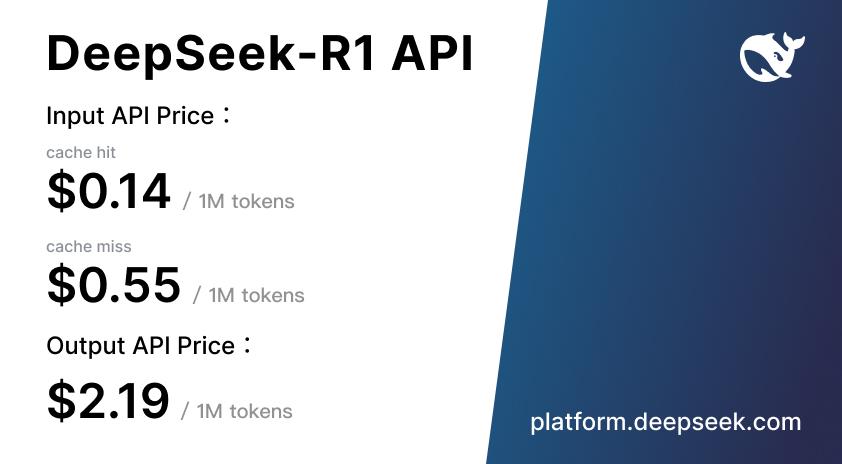
R1’s lower price with such compelling performance is what really sets it apart. User reviews highlight significant savings and consistent production.
| Model | Input Token Cost | Output Token Cost | Performance |
|---|---|---|---|
| R1 | $0.55 | $2.19 | High |
| o1 | $15.00 | $60.00 | High |
| Other | $10.00+ | $40.00+ | Medium/High |
R1’s Versatility Across Industries
R1 provides a versatile toolkit that can fit a myriad of work types. It’s the perfect option for enterprises that need powerful data processing and smart search functions. Its open-source roots and low cost of entry make it accessible to both startups and larger enterprises.
Below, you’ll see which fields stand to gain the most:
- Finance
- Healthcare
- Education
- Tech and software
- Logistics and supply chain
- Marketing and customer service
Solving Complex Search Challenges
Enabling complex search tasks to be more intuitive for expert users and casual users alike is a key feature of R1. It helps sift through massive data streams and identify what’s most relevant. R1 identifies exact matches, even in files that are noisy or jumbled.
Features such as multi-step reasoning and pattern spotting enable it to move beyond simple keyword search. Consider the finance industry—R1 taps into real-time stock market feeds to identify trends emerging in markets before anyone else.
In the healthcare sector, it enables providers to extract the most relevant information about a given patient from their medical history. Back in the classroom, R1 is tackling complex math equations, including ones with a multi-step solution that confuses the majority of search engines.
Here’s a checklist of search tasks R1 handles well:
- Multi-step question solving
- Pattern finding
- Filtering mixed data
- Spotting logical links
Real-World Application Examples
R1’s footprint is tangible in their practical application. In transportation and logistics, one company leveraged R1’s capabilities to reduce shipping delivery time by 10% through monitoring information streams.
R1 is used by schools to auto-grade math quizzes in seconds and identify frequent errors. In the field of marketing, R1 is being used by teams to categorize customer reviews and identify emerging trends.
Notable examples include:
- Stock data analysis for traders
- Medical record search for clinics
- Supply chain checks for shippers
- Survey insights for brands
Benefits for Different Sectors
| Sector | Key Benefits | Notable Features |
|---|---|---|
| Finance | Fast trend spotting, cost savings | Math problem solving |
| Healthcare | Smarter data pulls, error cuts | Pattern detection |
| Education | Step-by-step problem help | Logical reasoning |
| Logistics | Faster routes, less waste | Data processing |
| Marketing | Clearer customer trends | Factual Q&A |
Staying Informed on R1
One of the reasons R1 is able to lead in AI is because it is built on an open-source architecture. It uses reinforcement learning to train complex reasoning abilities. If you want to get the most out of R1, make sure to follow along with all the new updates.
Learn from user experiences and use the TIGER/Line shapefiles documentation for helpful tips and tricks. This beginners guide will explain what to look for, where to find those updates, how to navigate documentation, and how your feedback continues to mold R1’s development.
Accessing Technical Documentation
You can find R1’s technical documentation on its main GitHub page, which is updated with new releases and guides. This documentation is intended to walk new users through R1’s features, setup process, and known issues.
Important parts cover installation instructions, model weights, training recommendations, and limitations such as brokenness when mixing languages other than English and Chinese. Checklist for R1 docs:
- Setup and install steps
- Supported tasks and use cases
- Tips for fine-tuning
- Known limits (like mixed-language output)
- Troubleshooting and support links
Future Development Roadmap
R1’s public roadmap, often shared on its repo and forums, shows planned features, like better multilingual support and faster inference. Future development roadmap includes safer solutions to open-ended questions and enhanced support for “reasoning-heavy” tasks.
These additional measures protect against users generating bad results and ensure alignment with industry requirements and expectations. Milestones include:
- Multilingual support updates
- New benchmarks and testing
- More community-driven features
- Regulator compliance checks
Learning from User Feedback Loops
User feedback is crucial to shaping R1’s future. The team actively goes through GitHub issues, forums, and social media to find concepts. Examples such as better Chinese-English processing developed out of the user feedback.
Users can shape R1 by:
- Filing GitHub issues
- Posting on forums
- Joining user groups
- Filling feedback forms
Our Perspective on R1’s Edge
Deepseek-r1 boasts a specific, impressive set of strengths that make it unique among other AI models. One of the most interesting aspects we find is its approach to chain-of-thought reasoning. The model is refreshingly explicit about its process. This flattens and simplifies the math behind it, making it very easy to follow along and see how it gets to each solution.
This straightforward approach fosters user confidence and allows a user to understand how the model came to its conclusions. When tested on difficult tasks—such as advanced math or multi-step logic—R1 holds its own against the biggest AI models out there. It’s on par with the top performers, producing consistent, impressive results year after year.
What’s distinct is the training process for R1. The team combined a supervised fine-tuning with a large amount of reinforcement learning. This innovative approach allows the model to learn from a correct answer as well as from its own behavior. It seeks out and builds in feedback loops to improve its intelligence.
The family of models within R1 each serve their own specific purpose, be it dealing with increased data or refining logic. R1’s speed is its weakest aspect. Even advanced users often expected the model to return a response instantly. On the flip side, many have noted that it’s slow to generate answers, something that can be critical in fast-paced work.
A second benefit is R1’s open-source model. This provides more usability for teams to peek under the hood of the model, validate out any problems, and adjust accordingly. By being this open, it opens up discussions about what privacy means and how we should be following the rules. This is especially critical for companies working with private or sensitive data.
Why R1 Stands Out:
- Clear, step-by-step reasoning
- Strong results in tough real-world tasks
- Fresh training style that boosts learning
- Several models, each tuned for a task
- Open-source, so it’s easy to check and change
- Good at finding and using outside info
Conclusion
Deepseek-R1 provides blazing speed and high-definition resolution. It ensures excellent uptime, making it ideal for teams that need highly reliable AI that fits smoothly into their workflow. The true victories reveal themselves in practical tests—swift responses, easy installation, and palpable savings. People in banking, health care, and retail have discovered that R1 slots into their stacks with minimal pain points. No technical background is required to get started, but going beyond the basics and getting into the documentation is key for making the most powerful customizations. R1 remains cost-friendly, with affordable solutions for both individual artists and large studios. To stay on top of newly released features or bug fixes, subscribe to their announcements mailing list or the user discussion list. Explore, try out R1, and find ways that it can work with your own projects and initiatives.
Frequently Asked Questions
What is Deepseek-R1’s main function?
What is Deepseek-R1’s main purpose and function It helps them save time and avoid mistakes, optimize crews and resources, and better inform decisions on the fly.
How does R1 integrate with existing systems?
R1 provides deep flexible APIs and plug-ins. It can be quickly deployed with popular platforms and is compatible with major enterprise software used across the United States.
Is Deepseek-R1 cost-effective for small businesses?
Is Deepseek-R1 affordable for small businesses? It provides subscription-based plans designed for small businesses, allowing them to leverage powerful AI technology without significant upfront costs.
What industries benefit most from R1?
R1’s providers work across the finance, healthcare, retail, technology, and logistics industries. Its flexible capabilities meet unique industry needs and drive impactful outcomes.
How secure is R1’s data handling?
R1 leverages best-in-class encryption and operates within the confines of U.S. Data privacy standards. It makes sure that sensitive information is safeguarded during processing and storage.
Can R1 be customized for unique business needs?
You read that right—customization. Can R1 be tailored to meet specific business requirements? It lets companies customize its features to meet their unique business needs.
Where can I stay updated on R1 developments?
Where can I stay tuned on R1 news and happenings Additionally, you can join U.S.-based technology peer exchanges to learn about the most up-to-date innovations and best practices.

